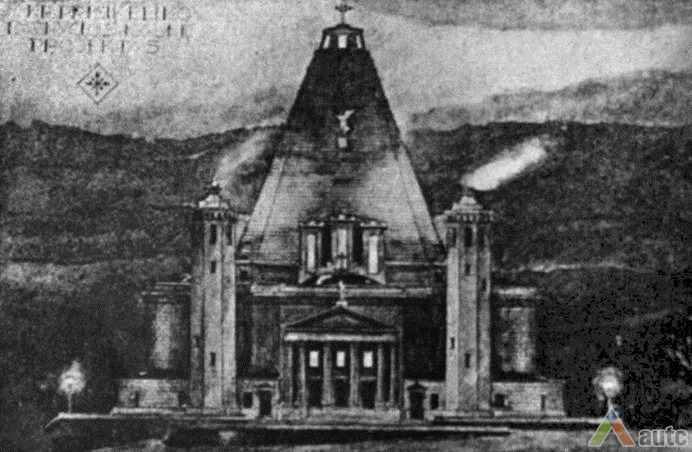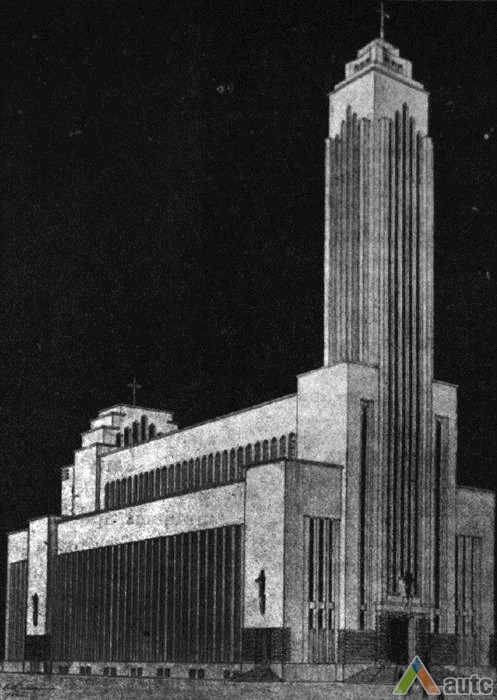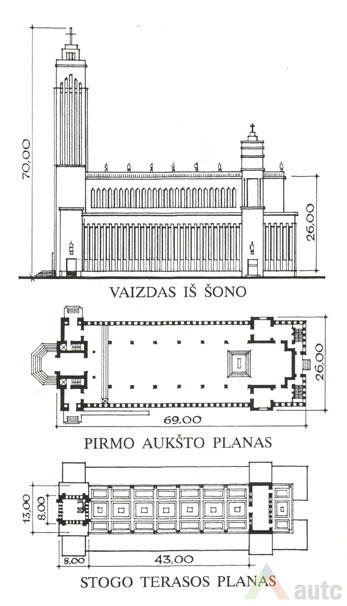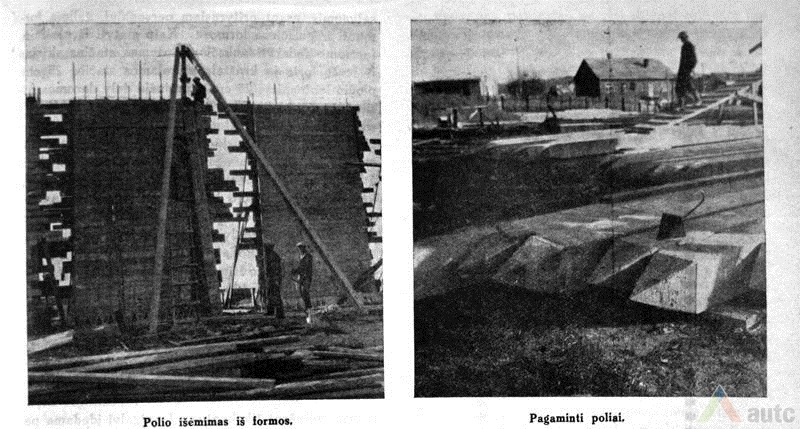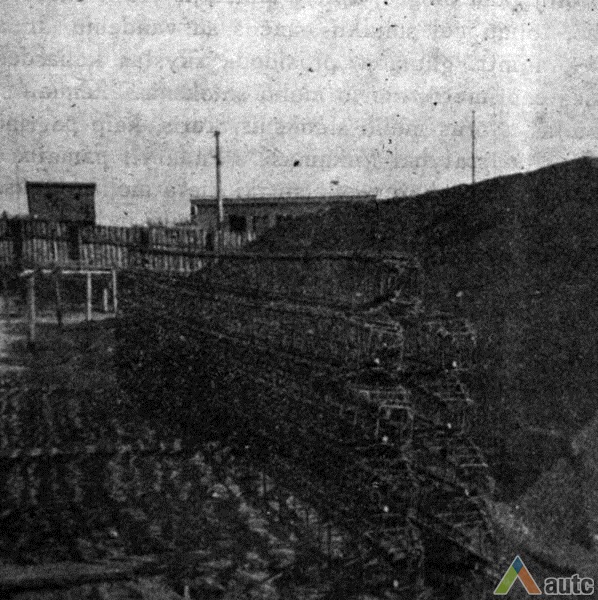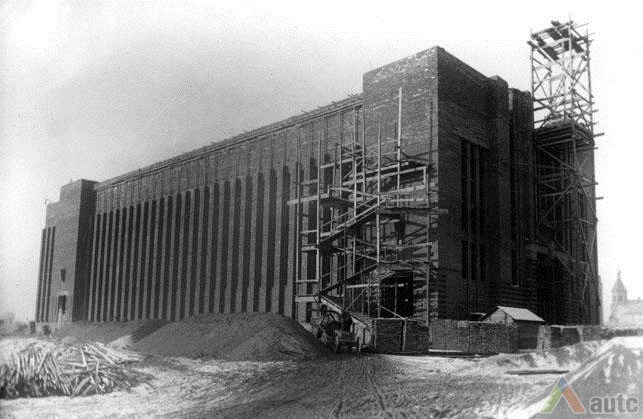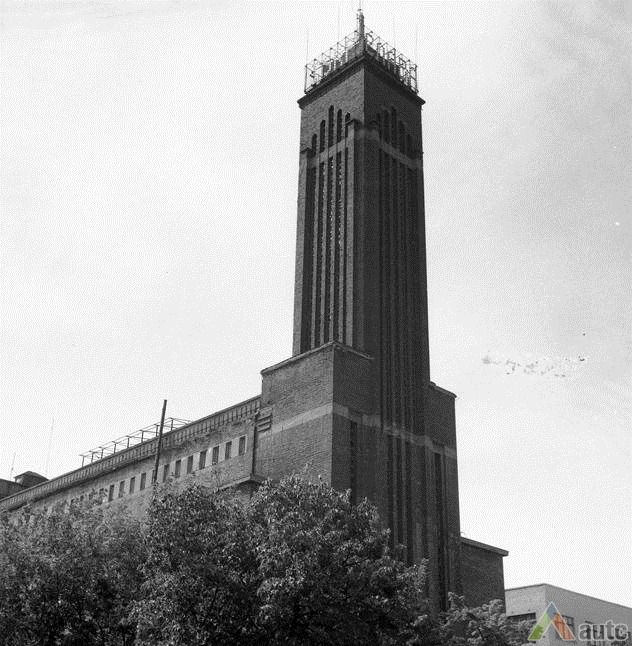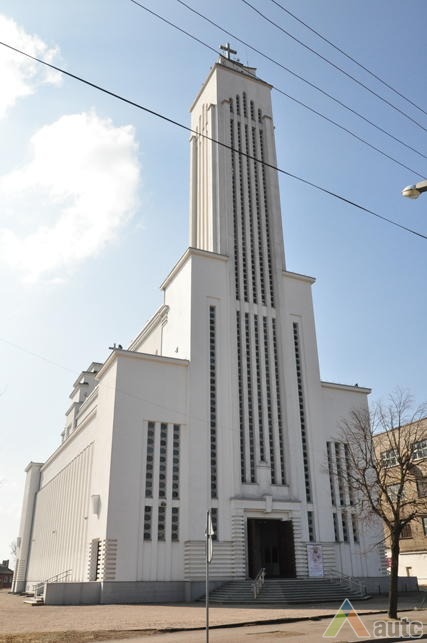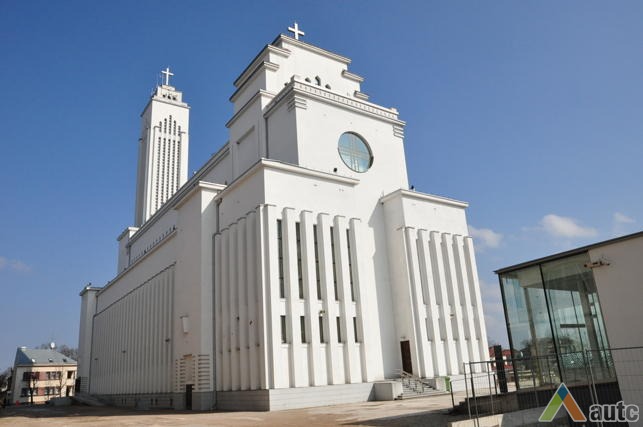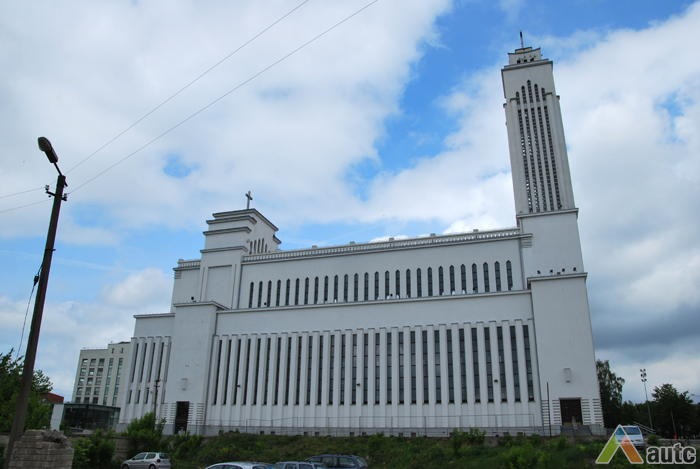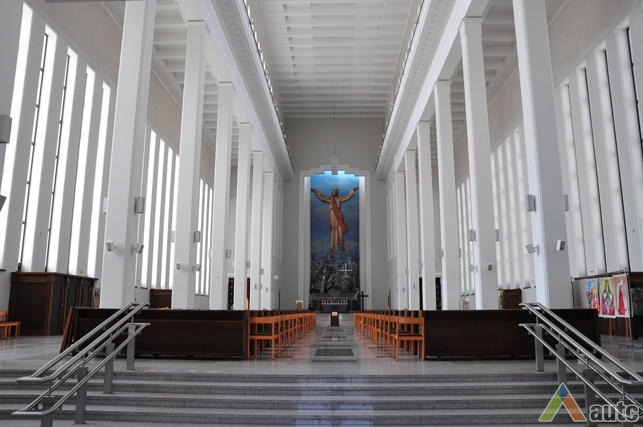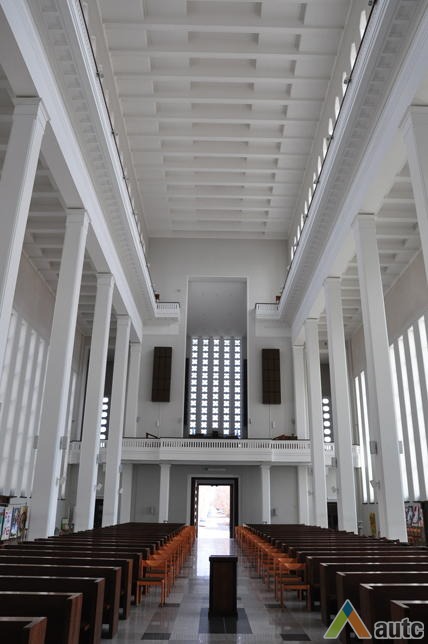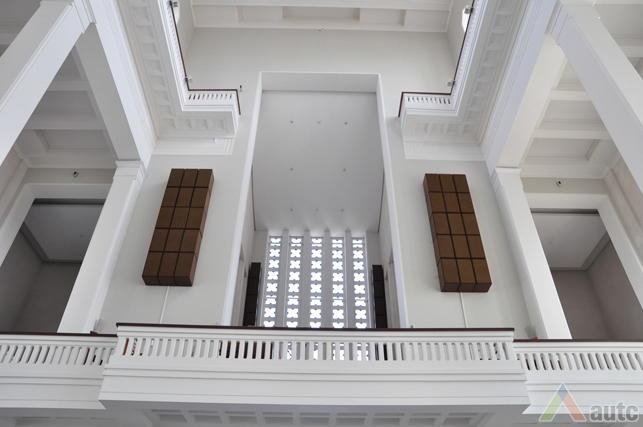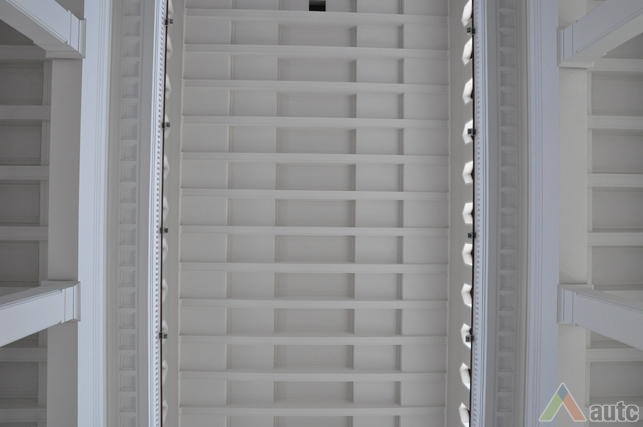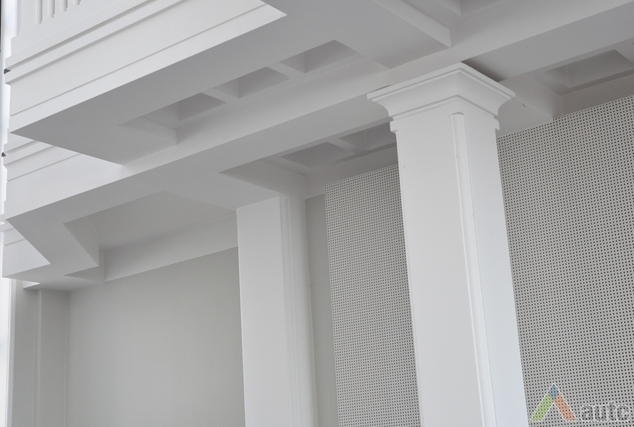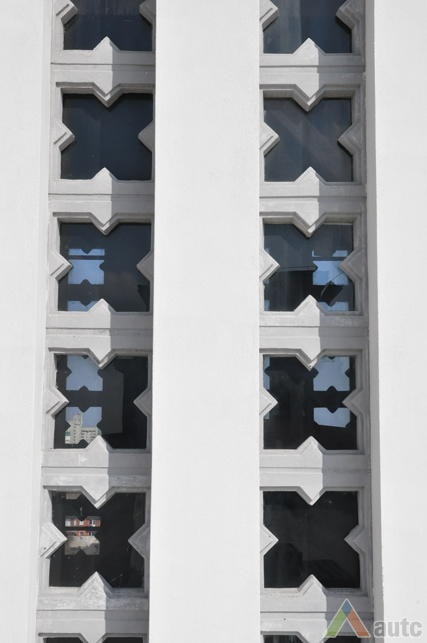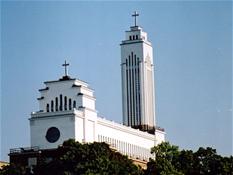

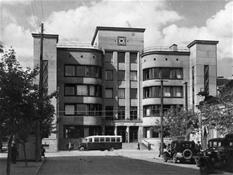
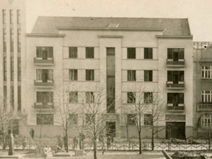

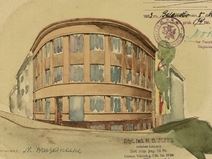
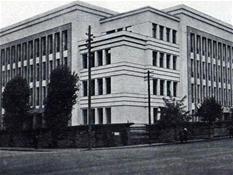


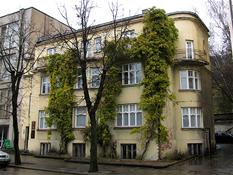
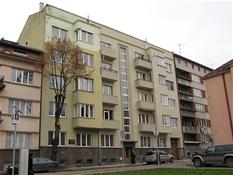
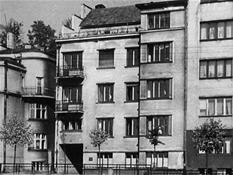
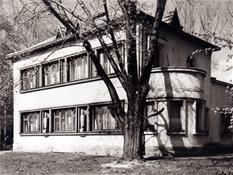

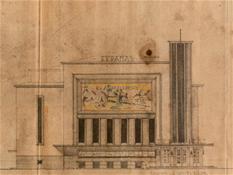
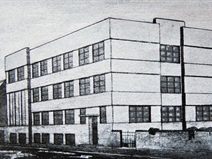
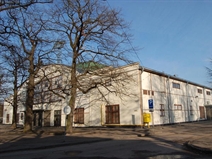
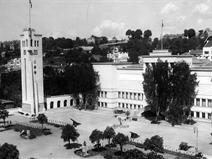


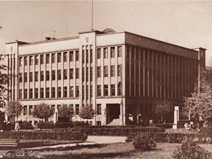
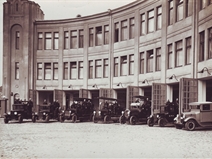
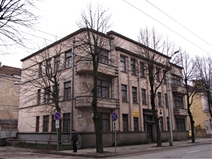
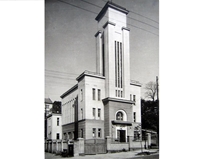
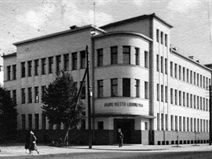
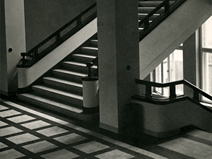
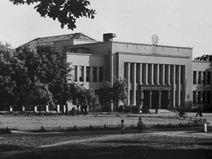

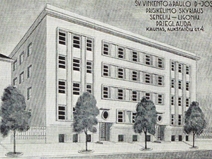

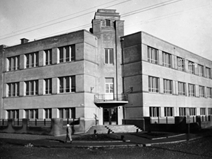

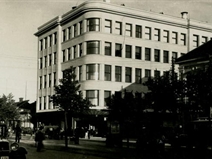
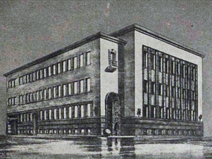



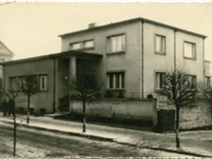
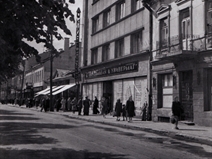
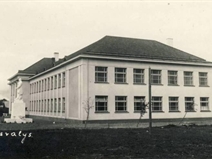

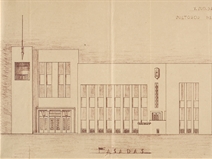
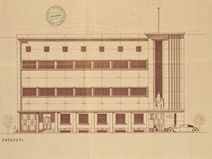
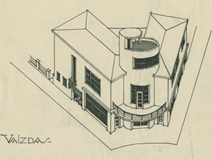
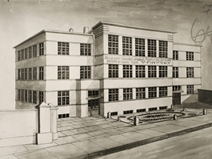
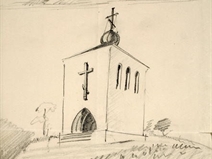
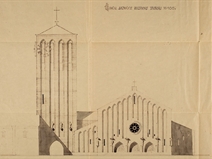
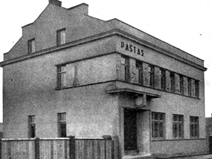
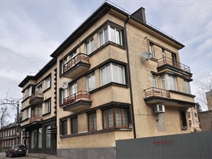
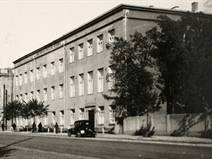
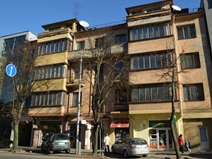
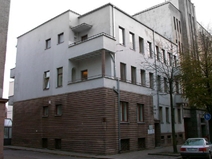
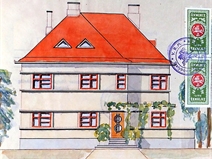

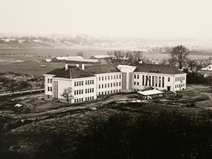

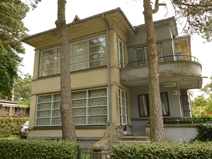



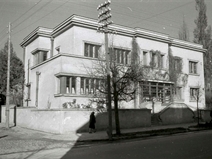
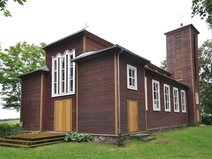
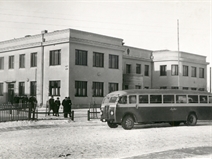

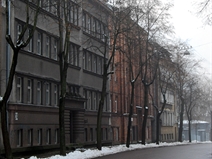
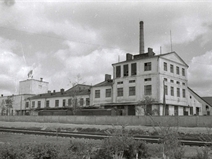
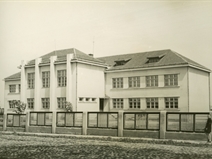
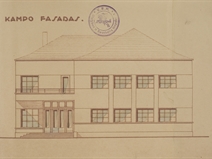
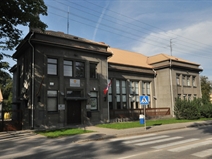

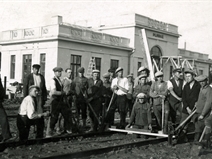
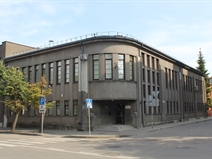

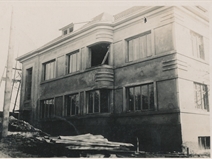

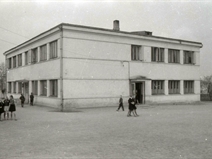

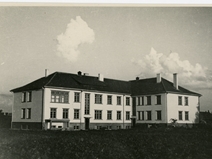
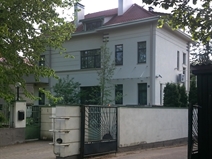
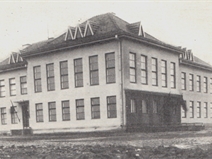
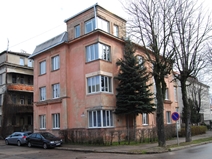
In 1922, Kaunas, the former temporary capital of Lithuania, gave rise to the idea to build the Monumental Christ's Resurrection Church, which, as a symbol of national revival, had to embody "long suffering and strenuous fights of our nation, in particular our greatest achievement - the revival of the independent state". In 1926, the council of construction and the executive committee, as well as their statutes were registered. The honorary chairmen of the council and the committee were elected the archbishop of Kaunas Juozas Skriveckas and the President of the Republic of Lithuania Antanas Smetona respectively; the rector of Žaliakalnis Church priest Feliksas Kapočius was appointed the chairman of the executive committee. In 1928, the municipal government gave a parcel of land in Žaliakalnis neighbourhood, near Žemaičių street.
The church design competition announced the same year requested that the church would be designed "at the discretion of the author but it should preferably characterise the peculiar qualities of the spirit of Lithuania and be linked with its honourable past and the fight for independence, and its exterior view should by itself be a monument to that fight...". In fact, as soon as the idea was shaped, quite a large group of opponents to both improper urbanistic location (lack of communication with the lower part of the city) and the very idea of the church emerged: "The monument of independence should be the monument of the entire nation, without reference to religion, language and political views." Proposals were brought forward to replace the church by a monument To the Unknown Book Smuggler, museum, etc. Nevertheless, the competition was announced in 1928. Out of 15 projects, prizes were awarded to three of them. The first prize went to Jonas Krasauskas, the second was given to Feliksas Vizbaras, and the third was awarded to Karolis Reisonas. However, it was decided that "none of them is consistent with the monument idea" and "after discussing it with certain professional architects and well-known public figures" the construction of the church was assigned to Karolis Reisonas, who made considerable changes to his competition project by creating a spectacular reinforced-concrete 83 m-high spiral-pyramid volume, which was to be crowned with a giant "7 m high statute of Christ's Resurrection". It was believed that the building "will give a character to Kaunas, like the Eiffel Tower does to Paris".
Nevertheless, the project became the target for vigorous debate and protests in the press of that time. The most active opponents were the art historian Halina Kairiūkštytė-Jacynienė, Balys Sruoga, V. Kudirka Society who saw "platform-type style", "profane character" and the "creative incapacity" of the Lithuanian nation in the church design. Hence, even though the collection of donations to the said project began, long debates and "the impaired economic state of the country" made to refuse the impressive sculptural project, and in 1933 the final, far more ascetic, solution more modest in scope (according to the first project, the church accommodated 5,000 believers, whereas the second was designed for 3,000 people; also, the height of the great tower reduced to 70 m) and rather close to modernism style was prepared. Nevertheless, even if reduced in scope, the church was designed as the largest in the Baltic countries and had to remain the pantheon of the nation.
Reinforced concrete poles (25x25, 3.5-6.5 m long) chosen for the foundations of the church were "for the first time applied on such a broad scale in Lithuanian civil engineering". 900 of such poles were used. The walls feature a reinforced concrete framework with brick filling. The ceiling is flat and "made of tall reinforced concrete beams with reinforced concrete masonry among them, cascade-shaped, which will not only create a certain architectural view but will serve as a very strong framework". Apart from a flat roof which is the key citation in the architectural language of international modernism, there were plans to use a symbolic sign of modernism - bright electrical lamps: "on the major holidays the great church tower will be illuminated with energy-intensive electrical lamps which will spread the rays of light across far-reaching environs". Even if the building is far simpler compared to the original project, the representative function of the church as "the sanctuary of the nation" was to be highlighted by various decorative solutions: "the great altar of the church will be like an ark of the covenant of the Lithuanian nation with God a giant painting will be behind the altar: Lithuanian old graves featuring leaning crosses with the Vytis - the revival of Lithuania - rising in the background of the reddish rays on the roof, the sculptural Way of the Cross with the bloody way of the cross of our nation next to them - the sufferings of Lithuanians for their faith and the freedom and independence of their country. Such a way of the cross will be the first in the entire Christian world," says the 1939 publication on the construction of the church.
Though in the beginning of construction processes it was optimistically believed that the church will cost some 3-5 million litas, one third of which would be financed from the state and the other share would be collected in donations and the work would be completed in 3-4 years, even when the estimate for a new project was considerably reduced, the construction was not completed until the Soviet occupation. During the years of Nazi occupation, the church was turned into a paper warehouse. In 1952, the building was adjusted to a radio factory, and was only returned to the believers in 1988. "In 1989, the architect H. Žukauskas and the specialists from the Department of Reinforced Concrete Constructions of Vilnius Institute of Civil Engineering, led by Prof. A. Kudzys, prepared the church restoration project." However, construction works were completed in 2004 only. The final project was drawn up by the former long-year chief architect of Kaunas City Algimantas Sprindys. As it was planned in the interwar period, the cellarage housed a columbarium and a chapel.
Due to its scope, urban situation and political importance, the church is definitely the most significant example of sacred architecture of the interwar Lithuania. A moderate building, not overloaded with details, flat-roofed and modern-structured, features the intertwining international ideas of modernism and the interpretations of local forms. One of the key aesthetical solutions - a dense rhythm of vertical lines - is an obvious characteristic feature of a number of public objects of the interwar period in Kaunas.
P.S. A part of the illustrations were taken from the Archive of Cultural Events and Publishing Group of the Kaunas County Public Library (KCPL). Travelling exhibition: Monumental Christ's Resurrection Church, 2003.
Vaidas Petrulis, Beata Brazdžionytė

